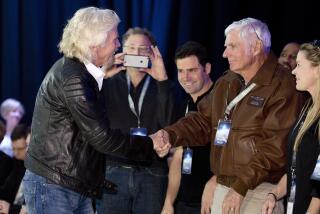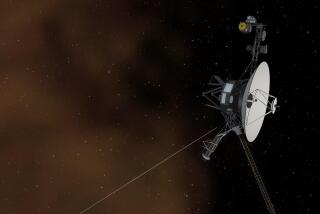Voyager Flight Planned to Test Turbulence Handling
MOJAVE, Calif. — The experimental Voyager airplane flew a four-hour test Monday that prompted the crew to decide that at least one more test flight is needed before attempting an unprecedented non-stop, unrefueled journey around the world.
Pilots Dick Rutan, 48, and Jeana Yeager, 34, decided that they needed to evaluate the plane’s handling in turbulence. The next test was scheduled for dawn today.
Monday’s flight began under sunny skies just before 8 a.m. and ended with a landing at Mojave Airport shortly before noon. The test was added to determine if a change in the plane’s center of gravity made it handle better in turbulence.
Decision Made
Monday’s test succeeded, but the crew and aircraft builders decided that further fine-tuning was needed.
After today’s flight, the Voyager team will decide on whether to set a date for the world flight or to conduct more tests.
The adjustments are needed to help the plane cope with an area of violent weather near the Equator, which Voyager will pass over twice on its flight of 10 to 12 days.
Rutan and Yeager had antenna problems Monday when they tested an ultra-high-frequency radio, which they hope will be their primary means of communicating with controllers during the global flight, Riva said. However, the plane will carry other radios too.
The plane weighs 1,845 pounds without fuel and will weigh about 9,300 pounds when it takes off on a planned 27,750-mile course from California, across the north coast of Australia, over the Indian Ocean and southern Africa, up the Atlantic to the Caribbean, then across Texas and back to California.
Extremely Efficient
Voyager is powered by an engine in front of its cockpit and another that pushes from behind. Both engines are used for takeoff but only the extremely efficient rear engine will power the plane when it reaches cruising altitude. Voyager has flown more than 50 times before, including a flight in July that covered 11,600.9 miles off the California coast, breaking the world’s absolute distance record for a closed-circuit or loop flight.
More to Read
Sign up for Essential California
The most important California stories and recommendations in your inbox every morning.
You may occasionally receive promotional content from the Los Angeles Times.










